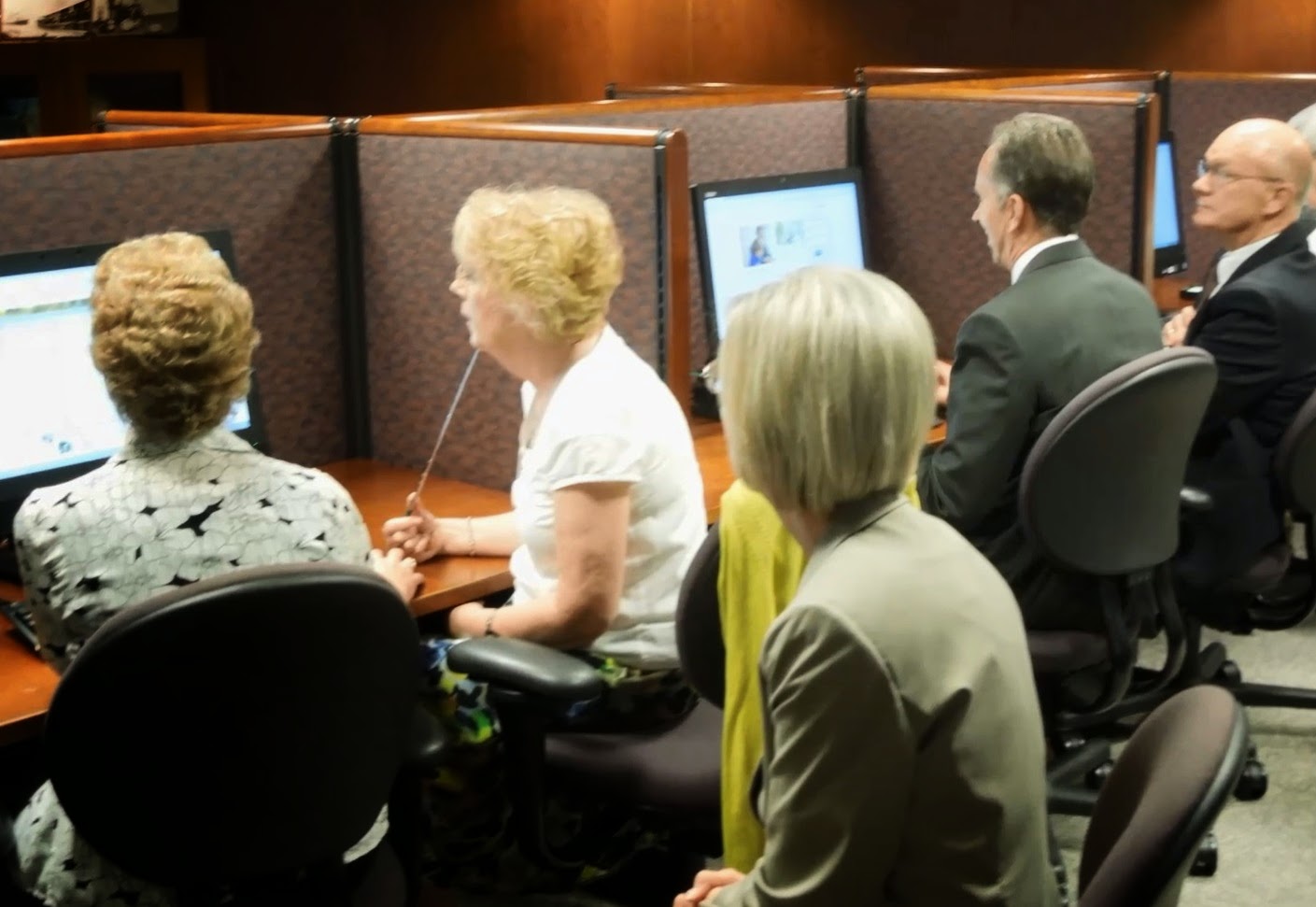Our week at Provo's MTC was a very general introduction to our life as missionaries. The second week of our mission was specific to our call as record preservation specialists.
 |
| Our "school house" for the 2nd week |
We lived at our home in Syracuse and each day commuted to Salt Lake City, parked in the Conference Center parking, walked to the Church Office Building, and up to the 5th Floor. Several floors of the Church Office Building are devoted to Family Search. Ann and I were treated like royalty because not very many missionaries trickle through the system and end up with this assignment. The program NEEDS missionaries, but now that senior couples can "request" certain assignments, there aren't many that are even aware of this type of service to consider it as a choice. We were the only couple being trained our week, so we really were the center of attention. The objectives of our five full days there were both general and specific.
 |
| Our first "exposure" to the digital camera equipment and software |
Half our time we were learning the very technical process of "capturing" the digital images of old documents. The 37-megapixel camera and controlled lighting are mounted on an elaborate, adjustable metal framework. We learned how to control the camera through a computer with software written by the Church--focusing, cropping, rotating, and documenting each picture. The digital files are so huge that it takes a terabyte drive to hold a week's work, and one of our images could be enlarged to a size many times its original without losing quality. That's the reason for our blog title, Packham's Pixels, because our attention to detail is clear down to the pixel level of the image.
 |
| Getting some help with genealogical research at the Joseph Smith Memorial Building |
The other half of our time was helping us understand how our work fits into the overall work of Family Search. Thousands of people are involved in finding documents that are needed, contracting with their owners to allow us to preserve them, preparing the documents, getting the teams in place (like us) with all the equipment and training they need, auditing the images for quality, archiving them, prioritizing them for indexing, arbitrating the work of the indexers, and then finally publishing the searchable data on Family Search's website.
 |
| Learning about handling old documents at the Church History Library |
 |
| Now there is a pin for Indiana on the map of the hundreds of Family Search cameras at work |
At the end of the week, our heads were swimming with information, and we had learned enough to know that we had A LOT more to learn. It was good, though, because it gave us our first glimpse of what life for the next 18 months will be like.
I'm so impressed! I've been scanning my mom's old photos and sharing them with my cousins. Sure wish I had the kind of equipment you have. 37 megapixel camera. Cool. Thanks for sharing your mission with those of us at home. Take care!
ReplyDelete